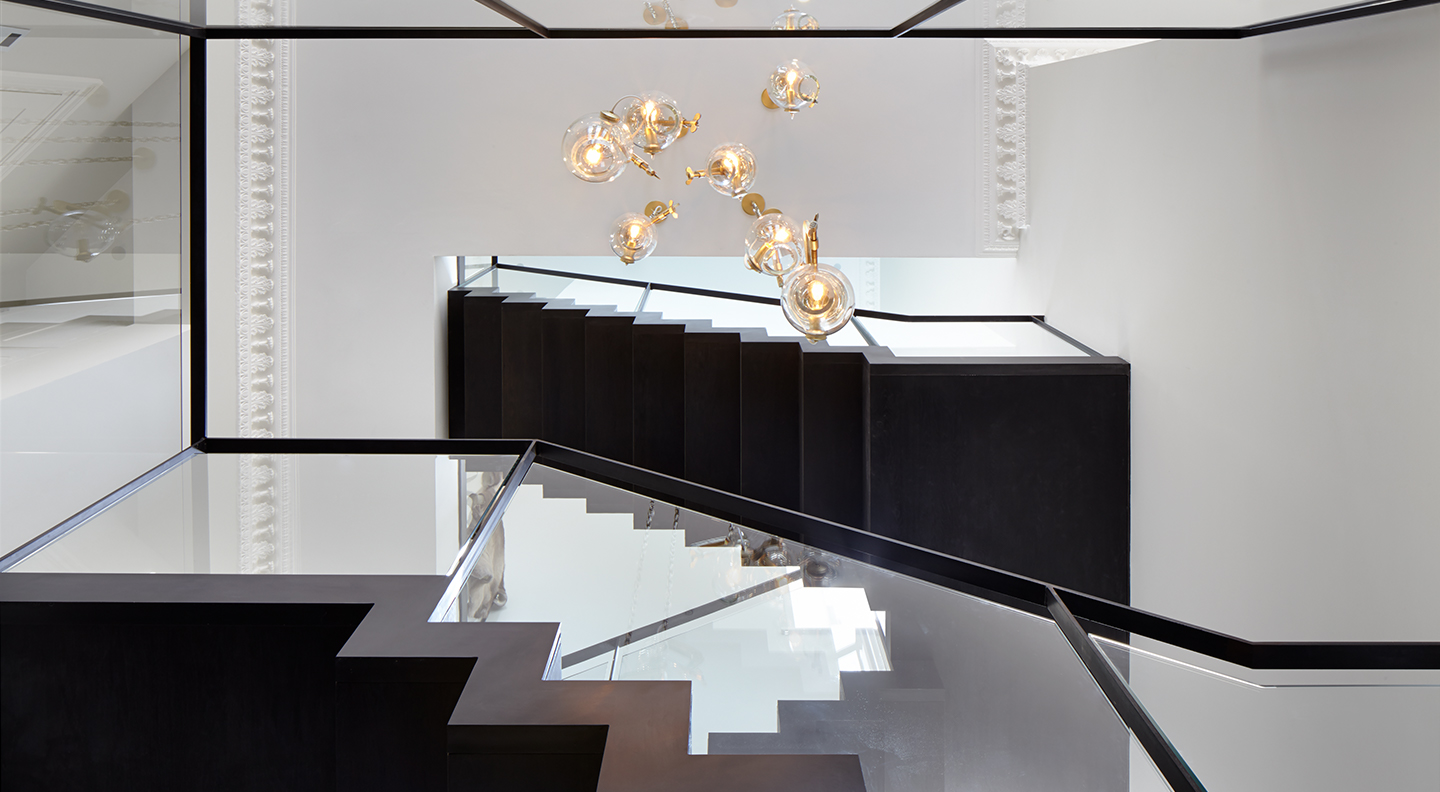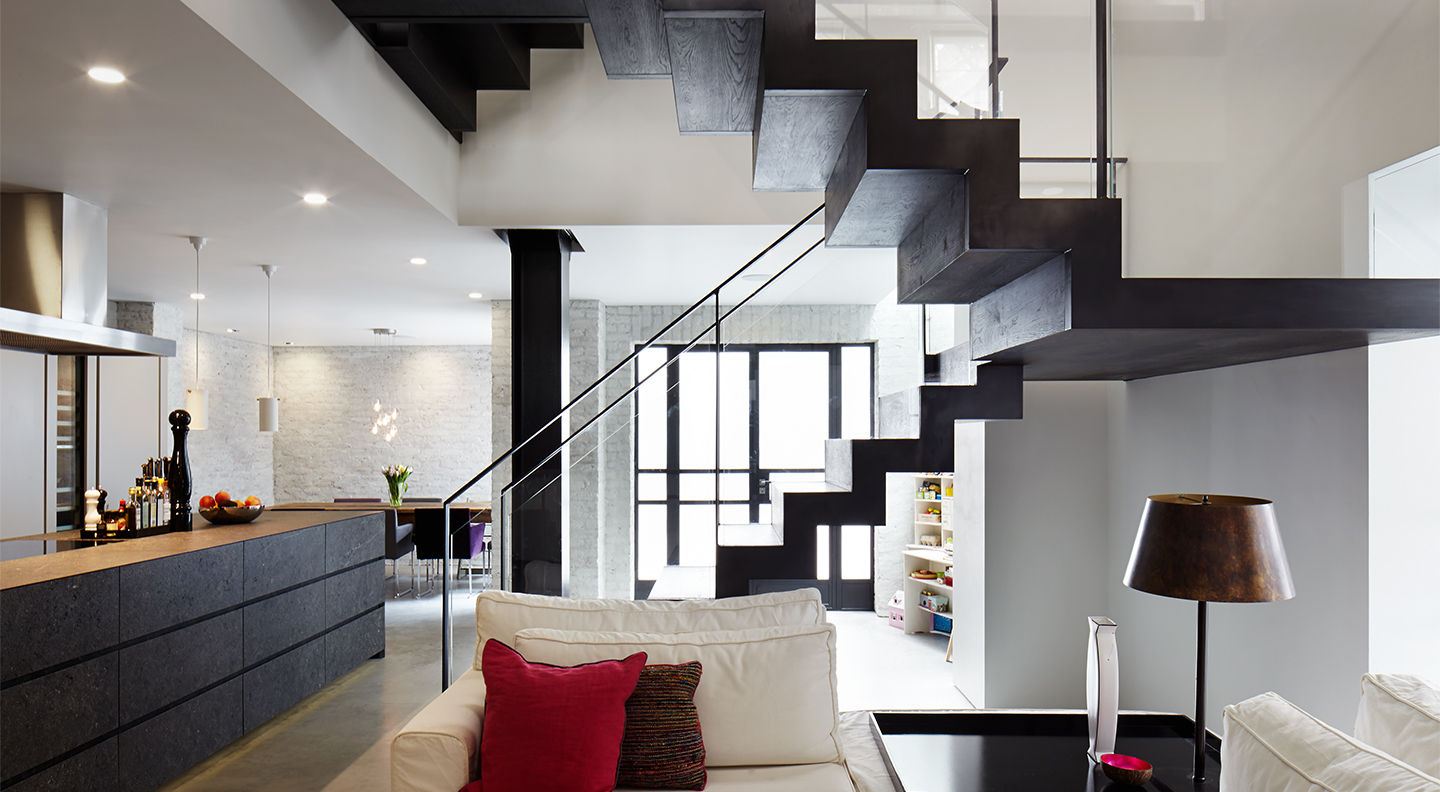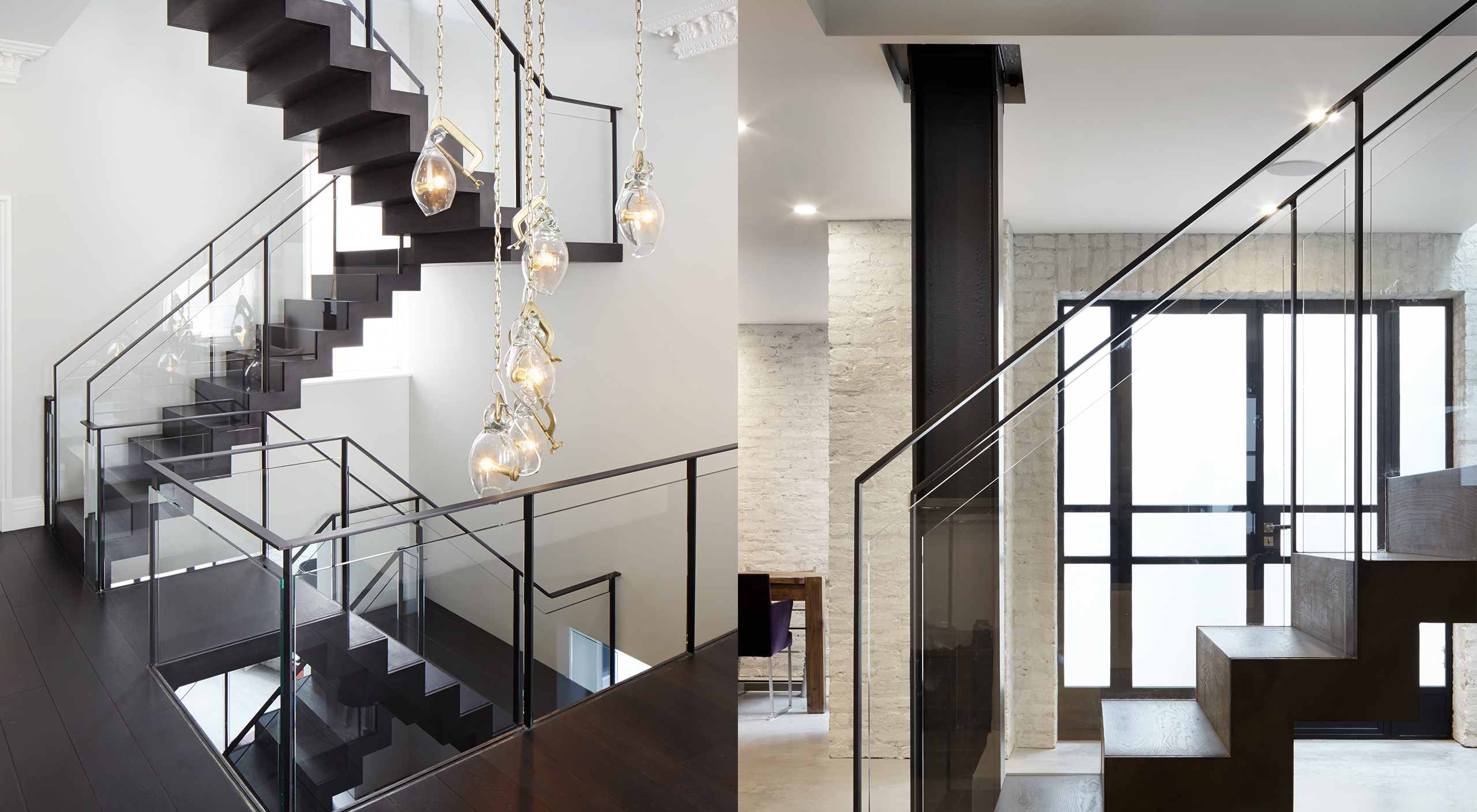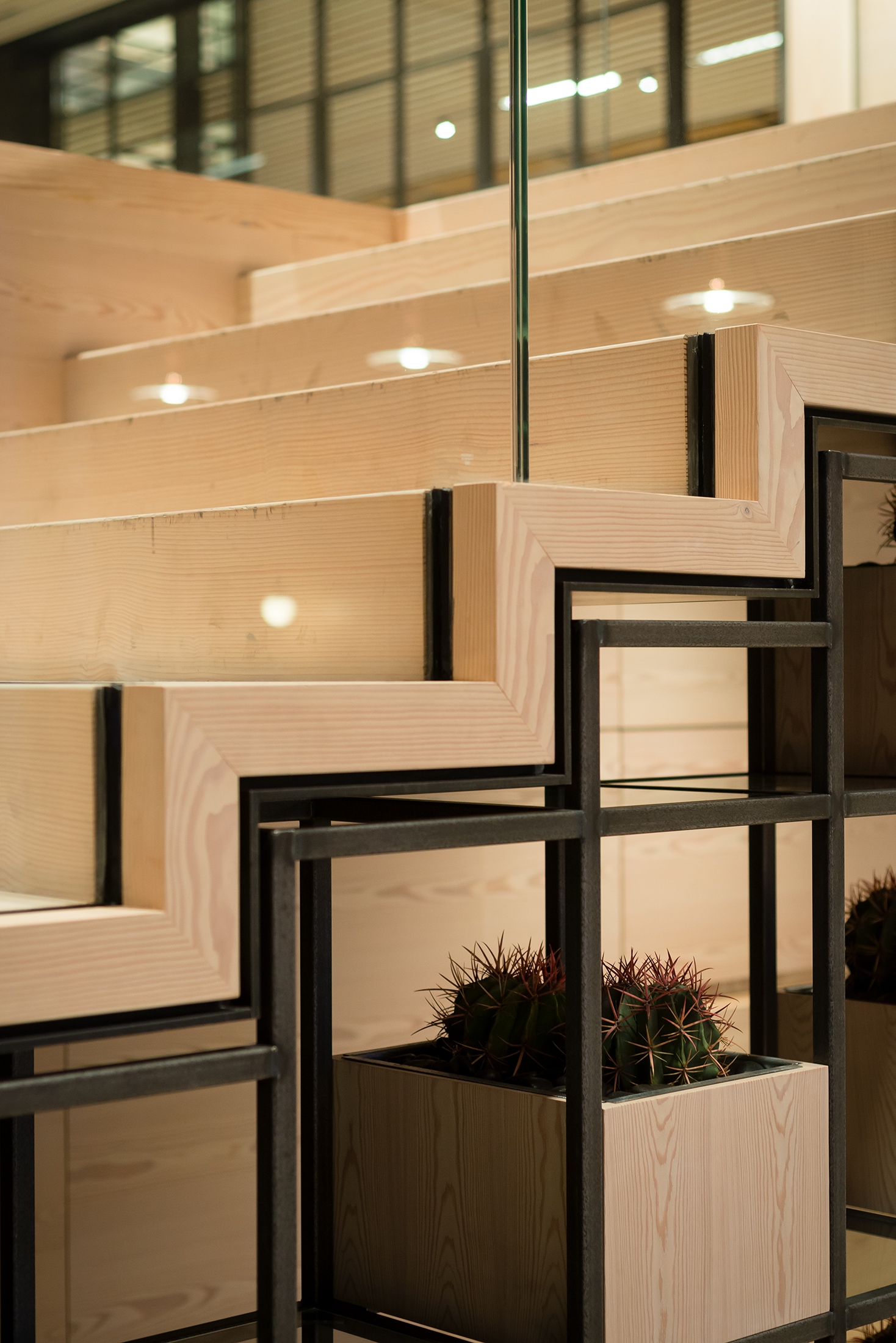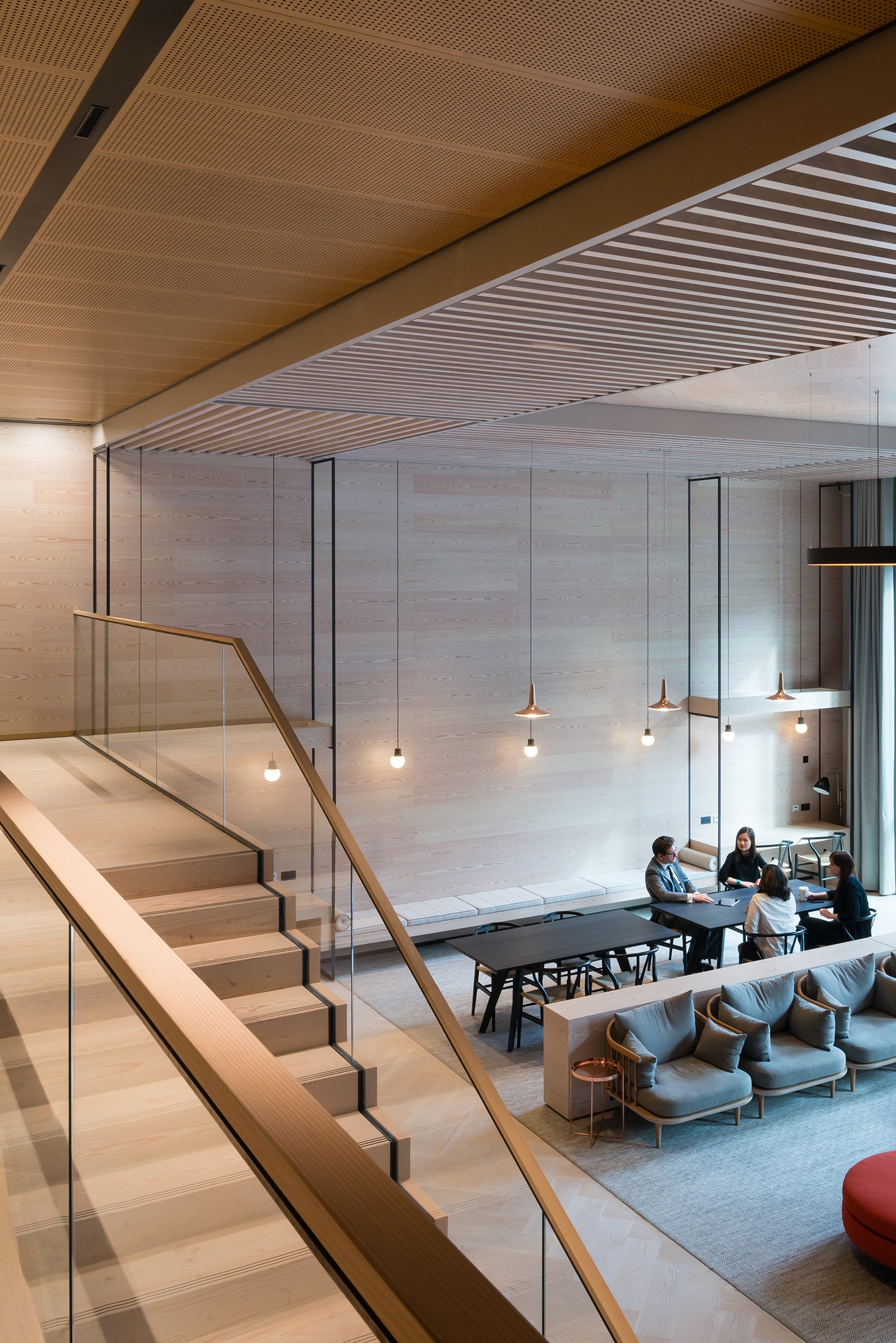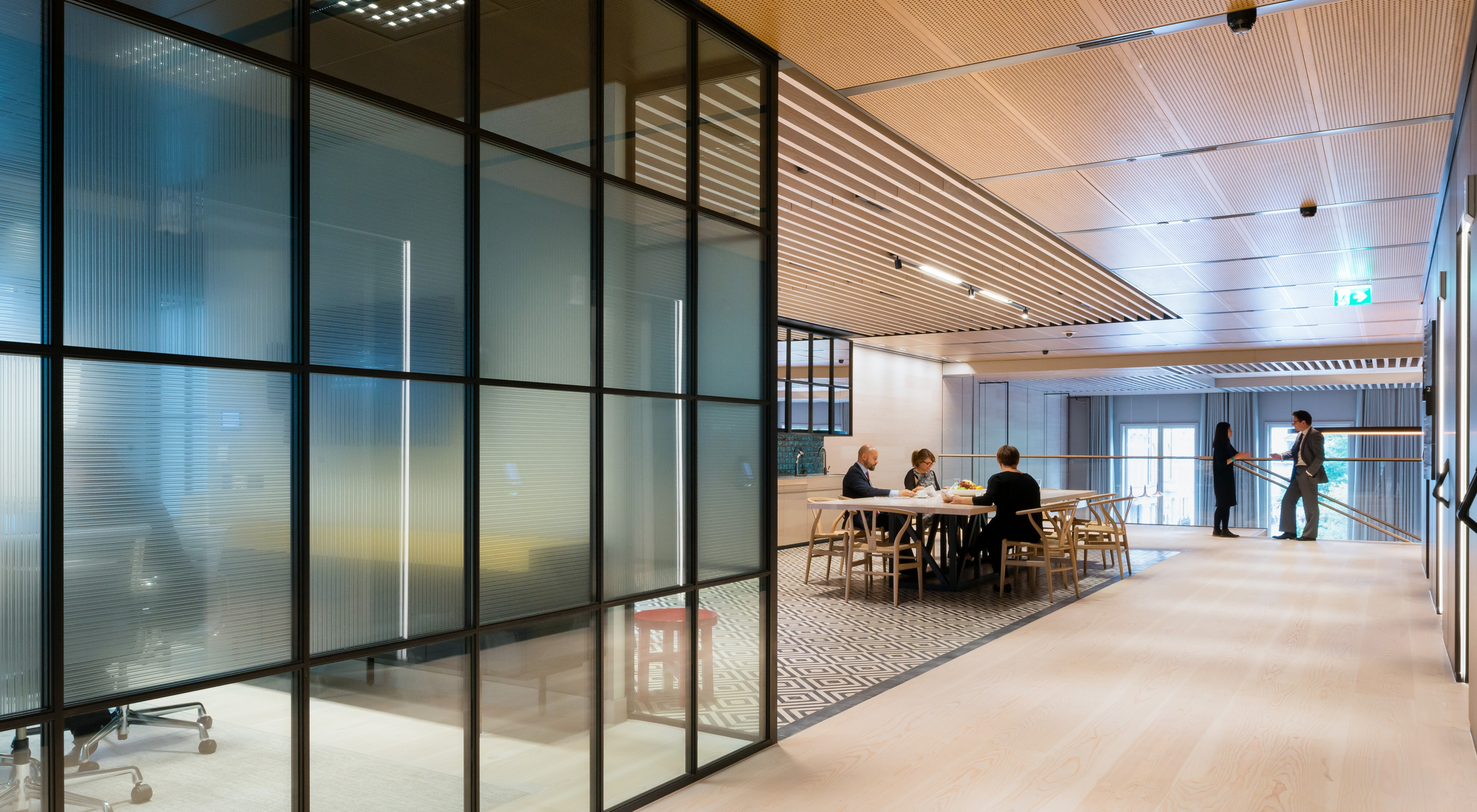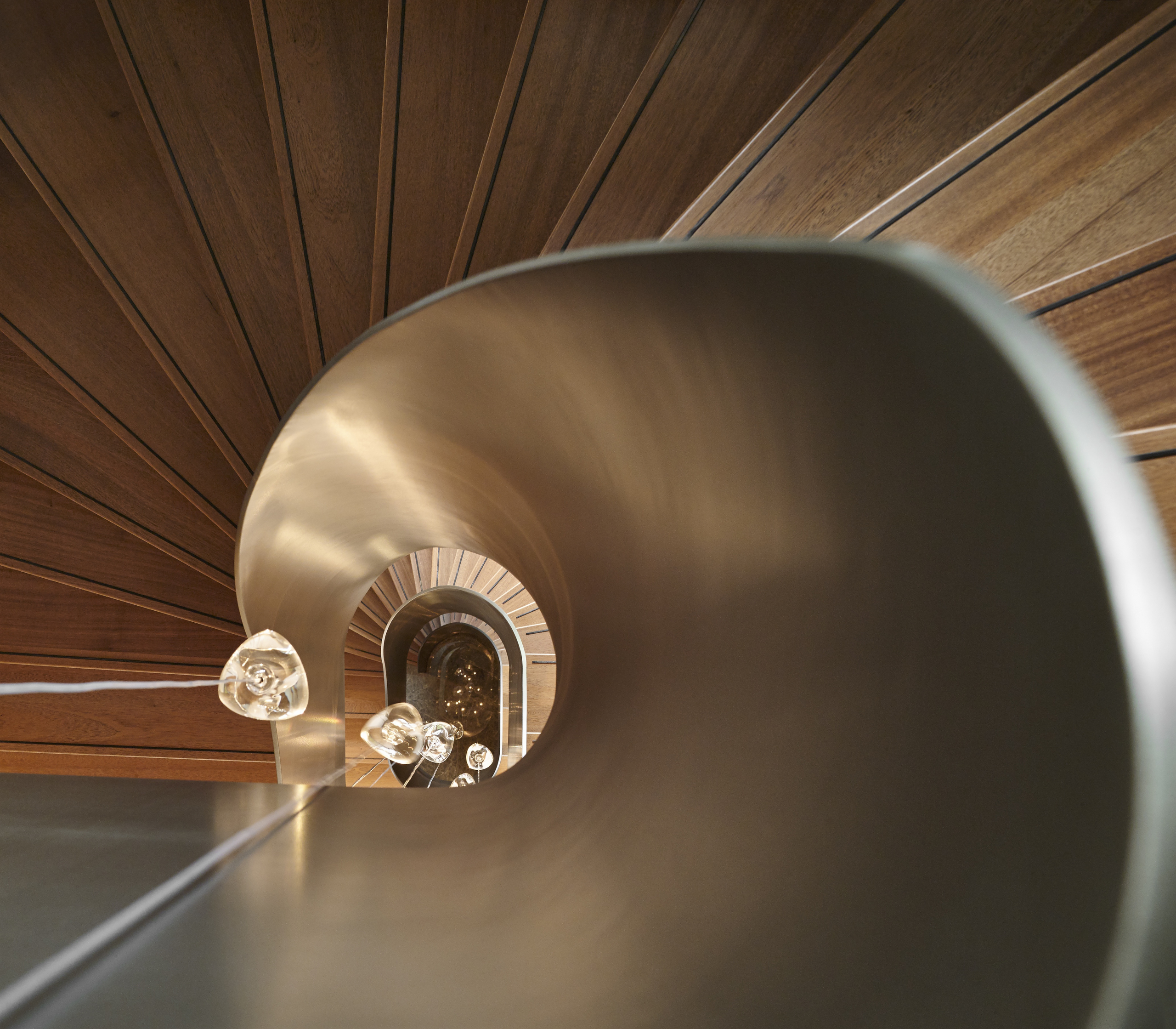

EeStairs have made and installed hundreds of feature stairs internationally, and most of them can be described with words like elegant, minimalist, highly crafted, sensual. But when blackened steel is used, stairs take on a sculpted, monumental look.
A great example is the three-level staircase we made and installed at a large country house in north Holland. The graceful helical twist of the staircase’s blackened steel balustrades contrasts beautifully with the perfectly smooth EeSoffit and the original interior fittings.
EeStairs creates blackened steel stair elements using hot-rolled steel sheets. These steel sheets, in their raw state, carry a hard coating of oxide called ‘mill scale’ and it’s removed by grit-blasting or milling.
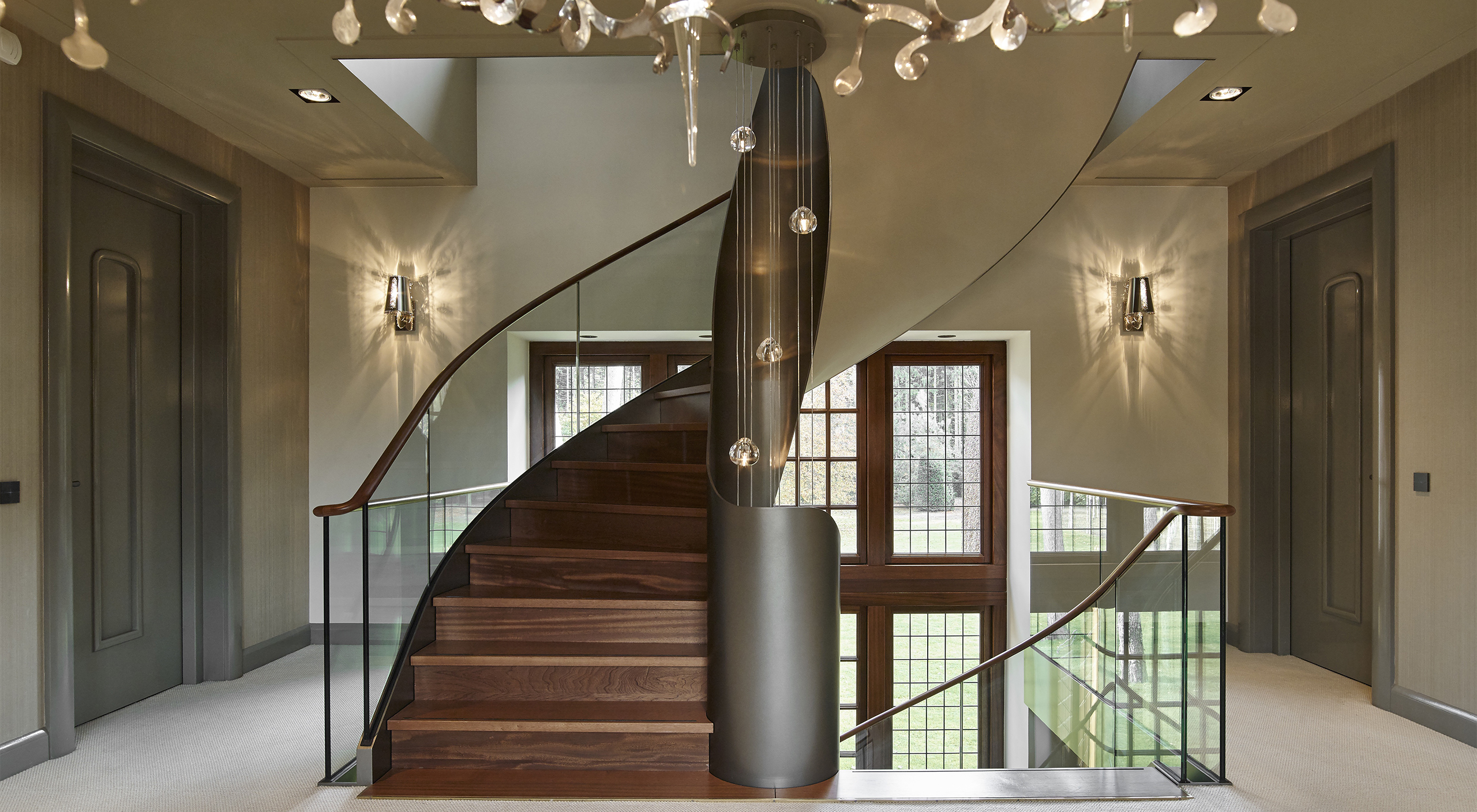
The four-step steel blackening process
The steel is then cut and formed into stair elements such as balustrades, soffits, and risers. We either blacken the steel in our factories, or do so on site. In both cases, the blackening process has the same four-step process:
1. The steel stair structure is washed and wiped clean with cloths.
2. A blue patina treatment is rubbed onto the steel with cloths, and allowed to react for several minutes.
3. Once the blue patina product has reacted with the surface of the steel, it is wiped down with wet cloth to neutralise the process. This product enhances the natural colour of the steel.
4. Once this coating is completely dry, the steel is given a two-coat top layer of durable lacquer, which allows the surface to be dusted or cleaned without affecting the look of the blackening coat under the lacquer. The lacquer also stops the steel reacting with moisture in the air and going rusty.
There are many kinds of black
The range of blackening treatments give different degrees of blackness and texture – anything from matt black and shiny black to mottled black. For example, to get a shiny black look the steel must be made as smooth as possible by sanding or brushing.
In the case of EeStairs six-flight staircase at an Emperor’s Gate home in London, the aim was to give the blackened steel of the stairs and box-stringers as even a colouration as possible to compliment the clean-lined, mostly
monochrome interior decoration.
An important point about blackened steel is that the surface quality and subtle tonal variations of the rolled steel never loses its character, even if the blackest colouring products are applied. So, unlike stainless steel, blackened steel always retains something of its original industrial metallic character.
This can be seen in the wide ‘bleacher’ staircase at the offices of KPMG in Reading, UK. The subtle colour variations in the blackened steel balustrade screens contrast perfectly with the perforated patterns and the marble treads and risers.
The use of recycled steel
And here’s an interesting fact: standard types of steel are estimated to contain about 90% of recycled steel, which means it will never be an absolutely even colour – and neither will the blackening treatment. But many designers think this is a bonus because the slight variations in the blackened surface of balustrades or steps have a more visually rich character.
This visual quality can be a bonus even if the blackened steel is used in relatively low-key stair elements. At an international mining company’s office in St James’s Square, London, the wooden steps sit on a base frame made of blackened steel. As you can see, the semi-transparent blackening treatment deepens the natural colour of the metal.
